- Press Office
- Press releases 2020
- Fascination of the invisible
Fascination of the invisible
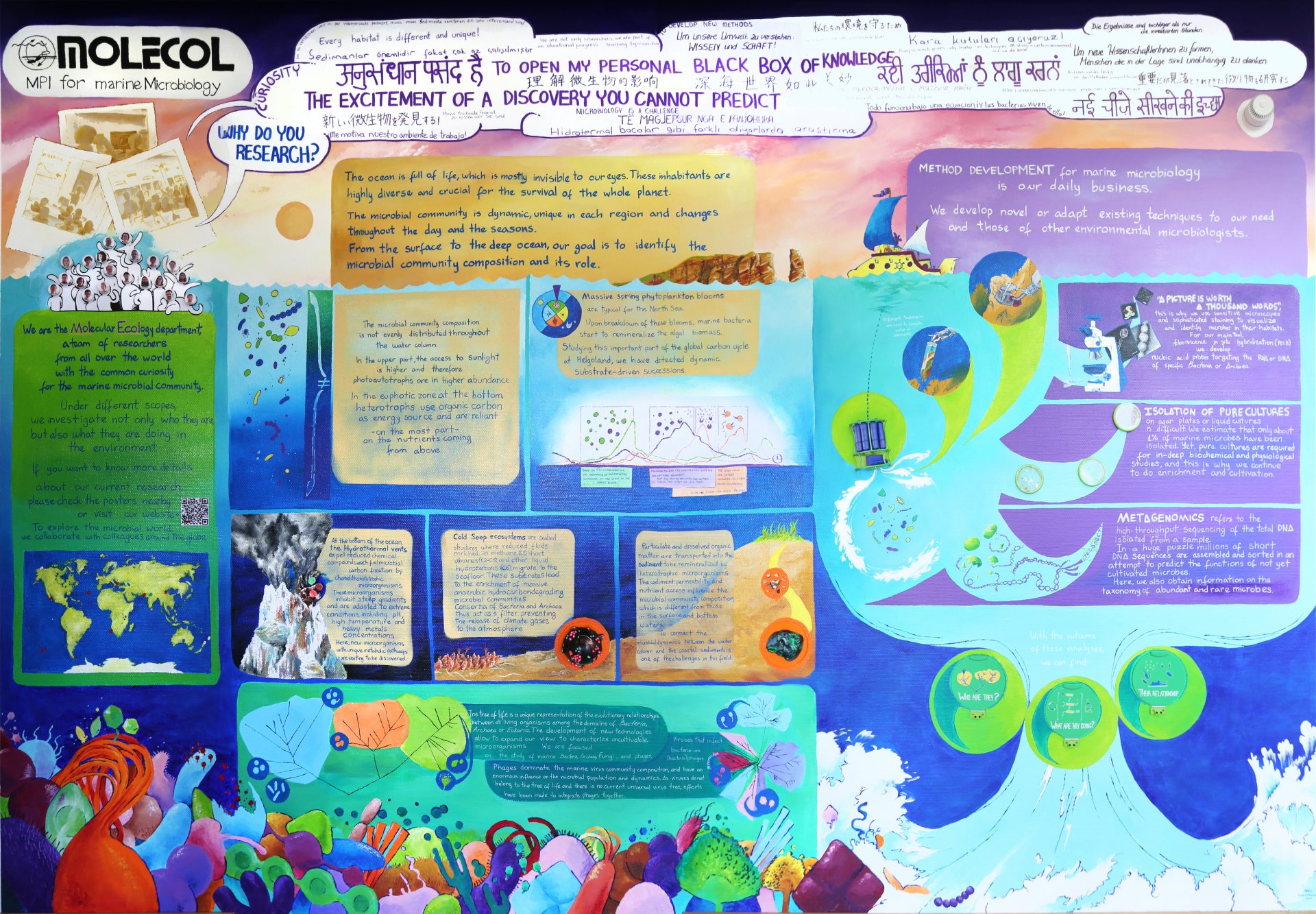
The artwork depicts the complex studies carried out by the scientists of the department. For example, you can see the microbial habitats that they focus on: From hot vents in the deep sea to the coastal areas of the oceans. Starting from the “big world”, Alexa gradually shows more and more details until she arrives at unicellular organisms and takes a look through the microscope with the viewer. At the same time, she describes important research equipment, shows the everyday life at the institute between microscope, laboratory and computer, and keeps the connecting element constantly flowing in between: the seawater.
Very small but very important
However, research does not just mean to look, research also means to touch. For that reason, the mural also contains interactive elements. Hatches, petri dishes or a magnetic model of a water sampling rosette bring to life the research of the department. Finally, also the "Molecol"-scientists contributed to the mural: In short words they describe what science means for them and why they find single-cell organisms are so fascinating.
Alexa characterizes this in her painting: “The ocean is full of life, which is mostly invisible to our eyes. These inhabitants are highly diverse and crucial for the survival of the whole planet. The microbial community is dynamic, unique in each region and changes throughout the day and the seasons. From the surface to the deep ocean our goal is to identify the microbial community composition and its role.”
The mural clearly summarizes the work of the Department of Molecular Ecology in words and pictures and shows visitors why people dedicate their life to research the seemingly invisible.
Slideshow: Making of the mural painting
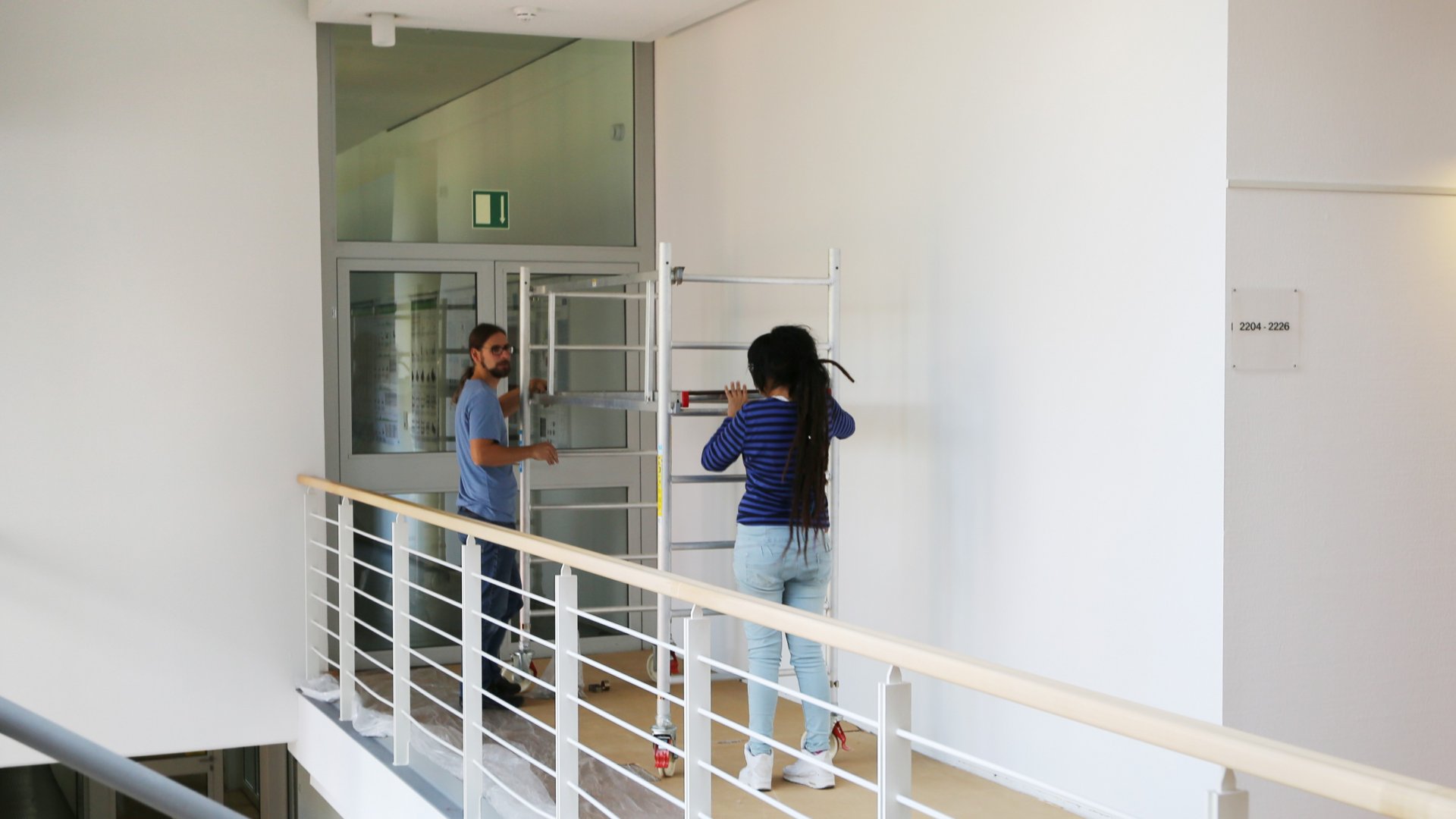
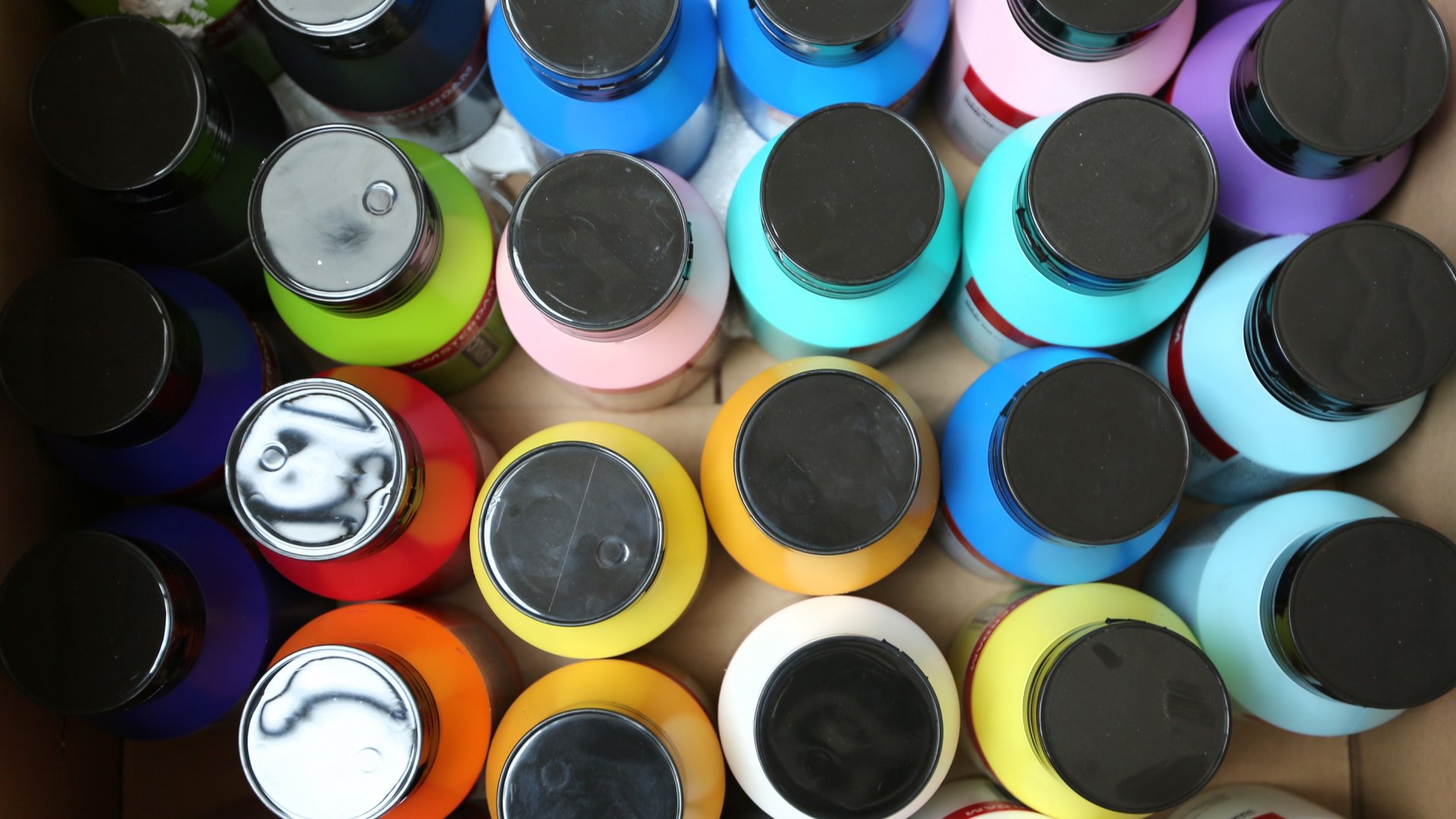
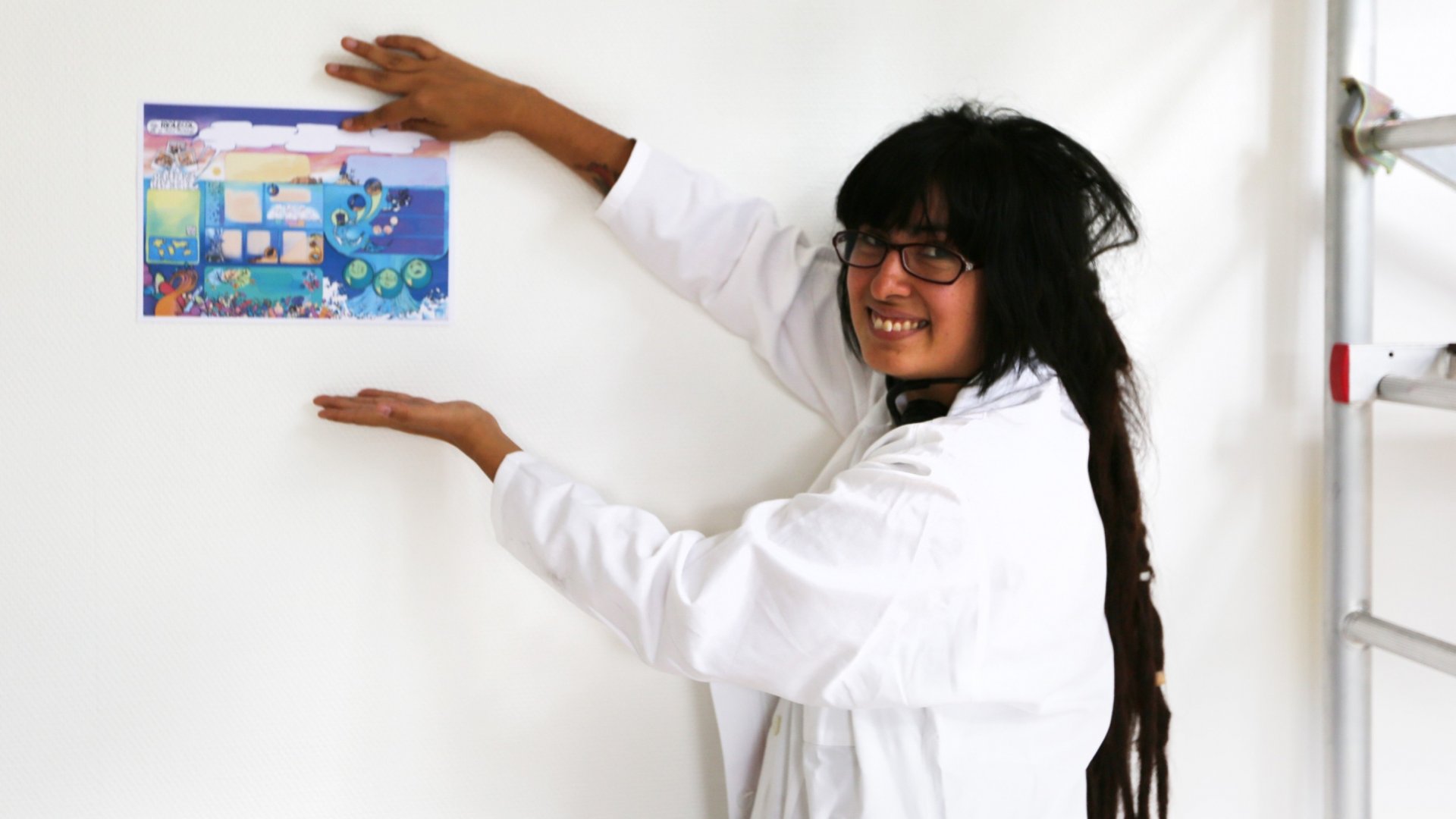
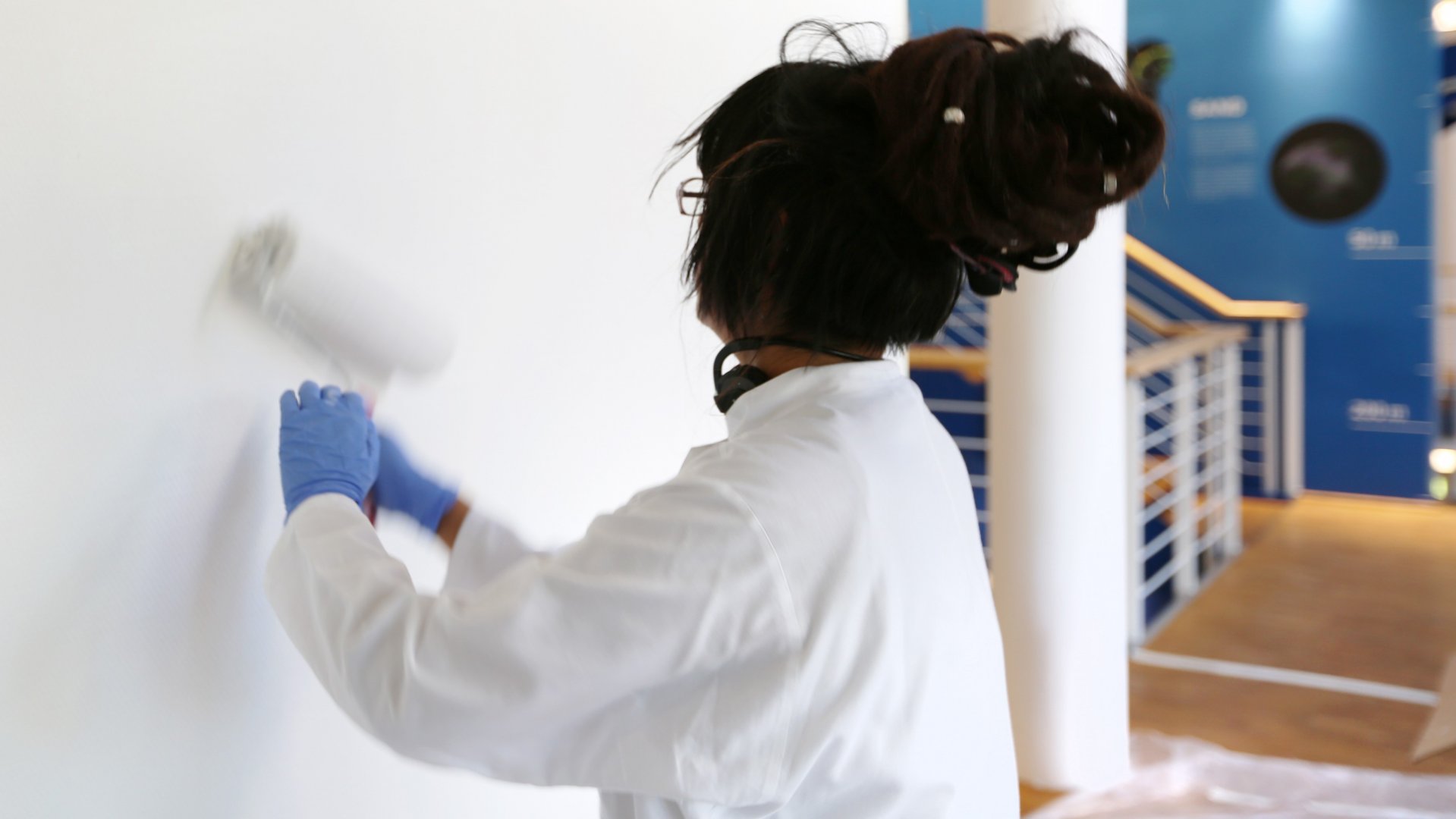
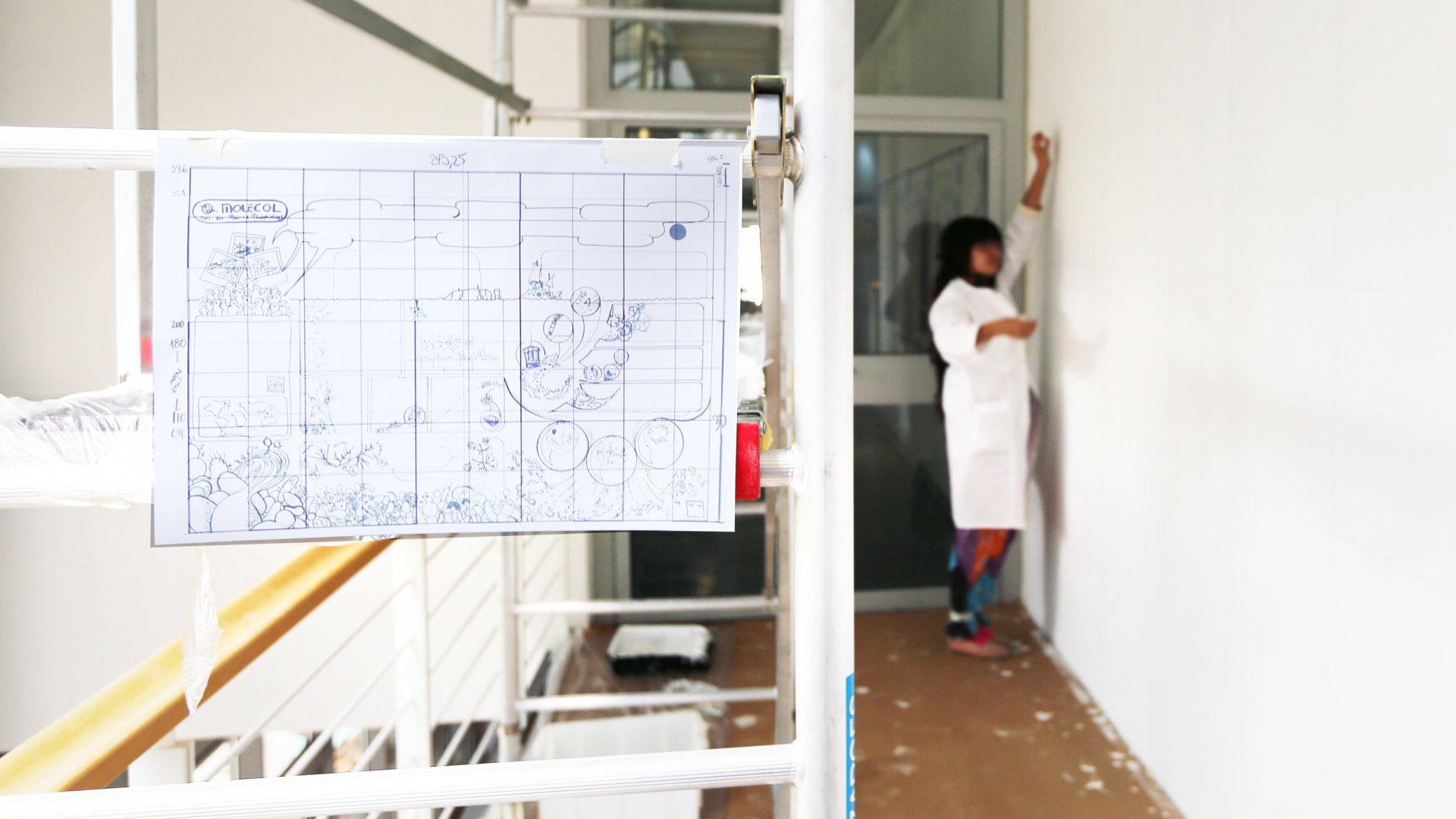
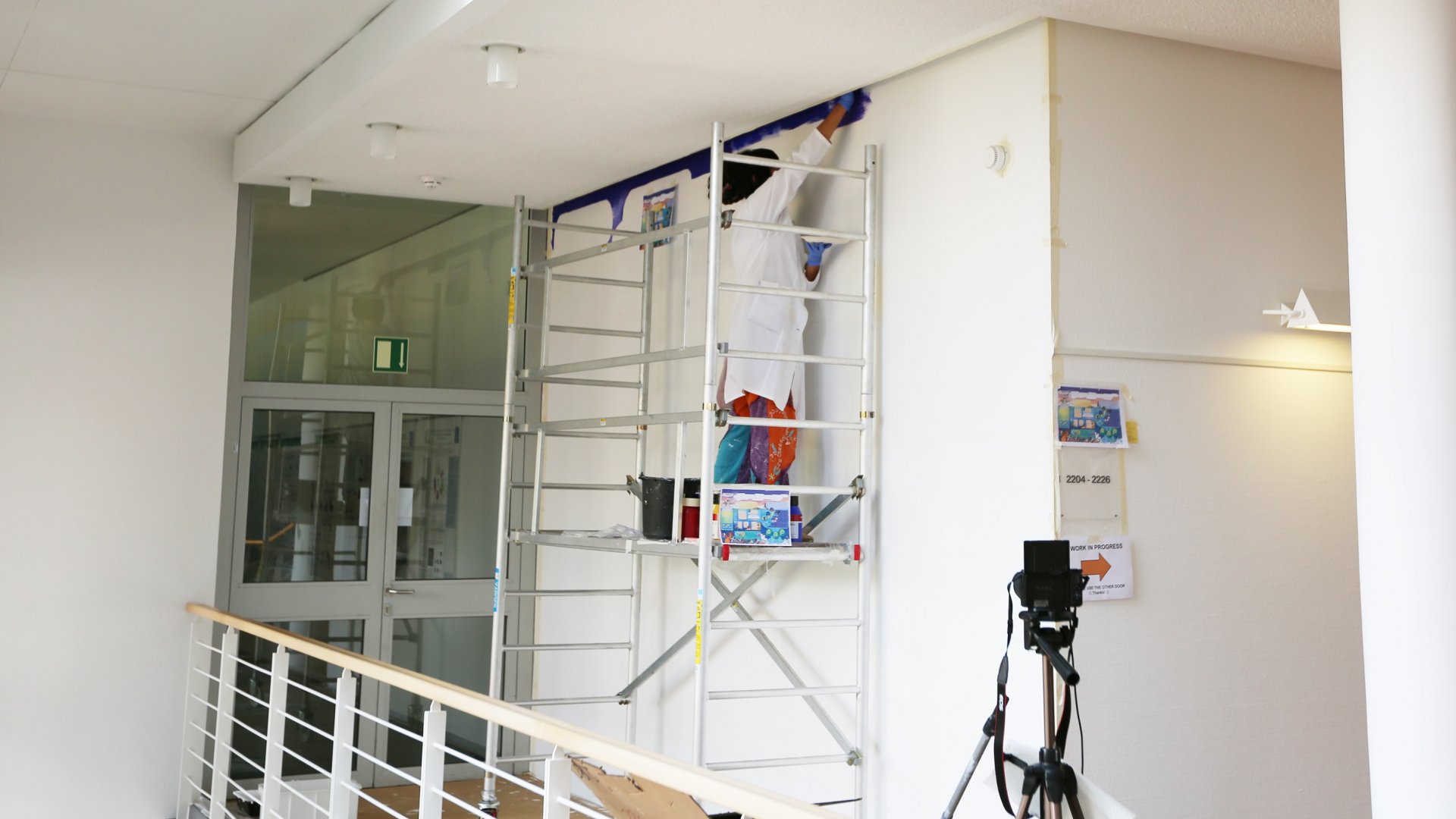
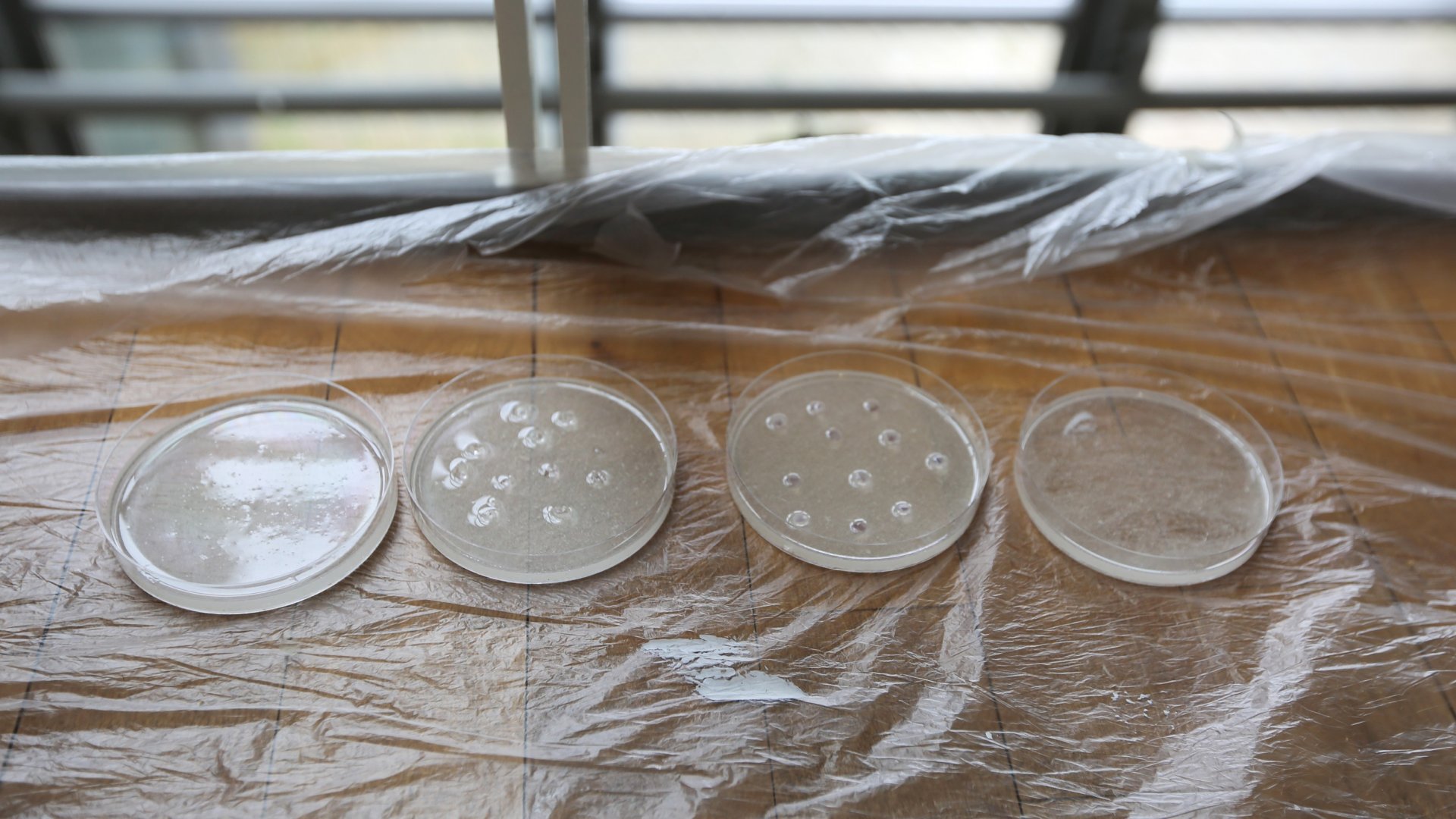
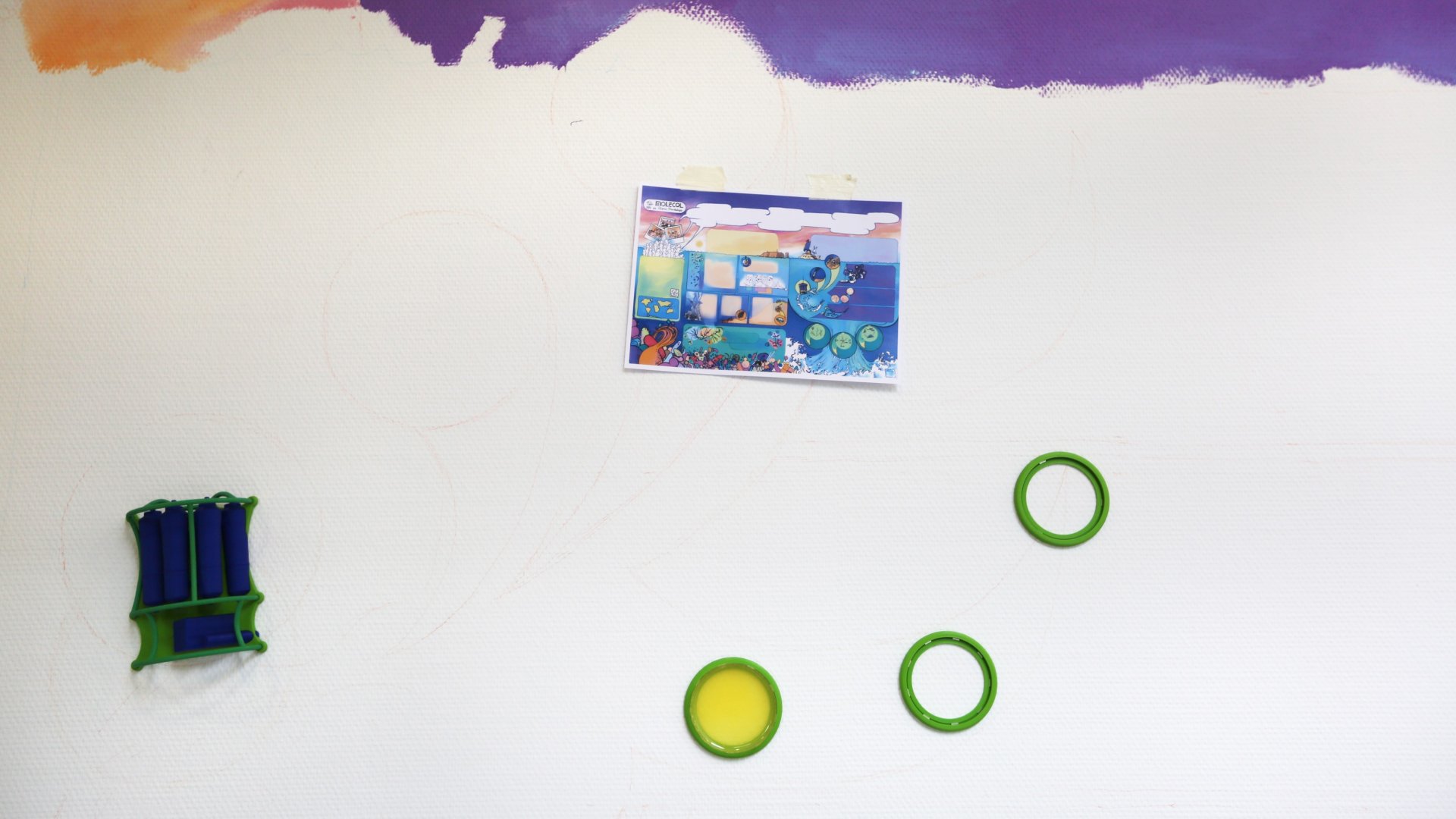
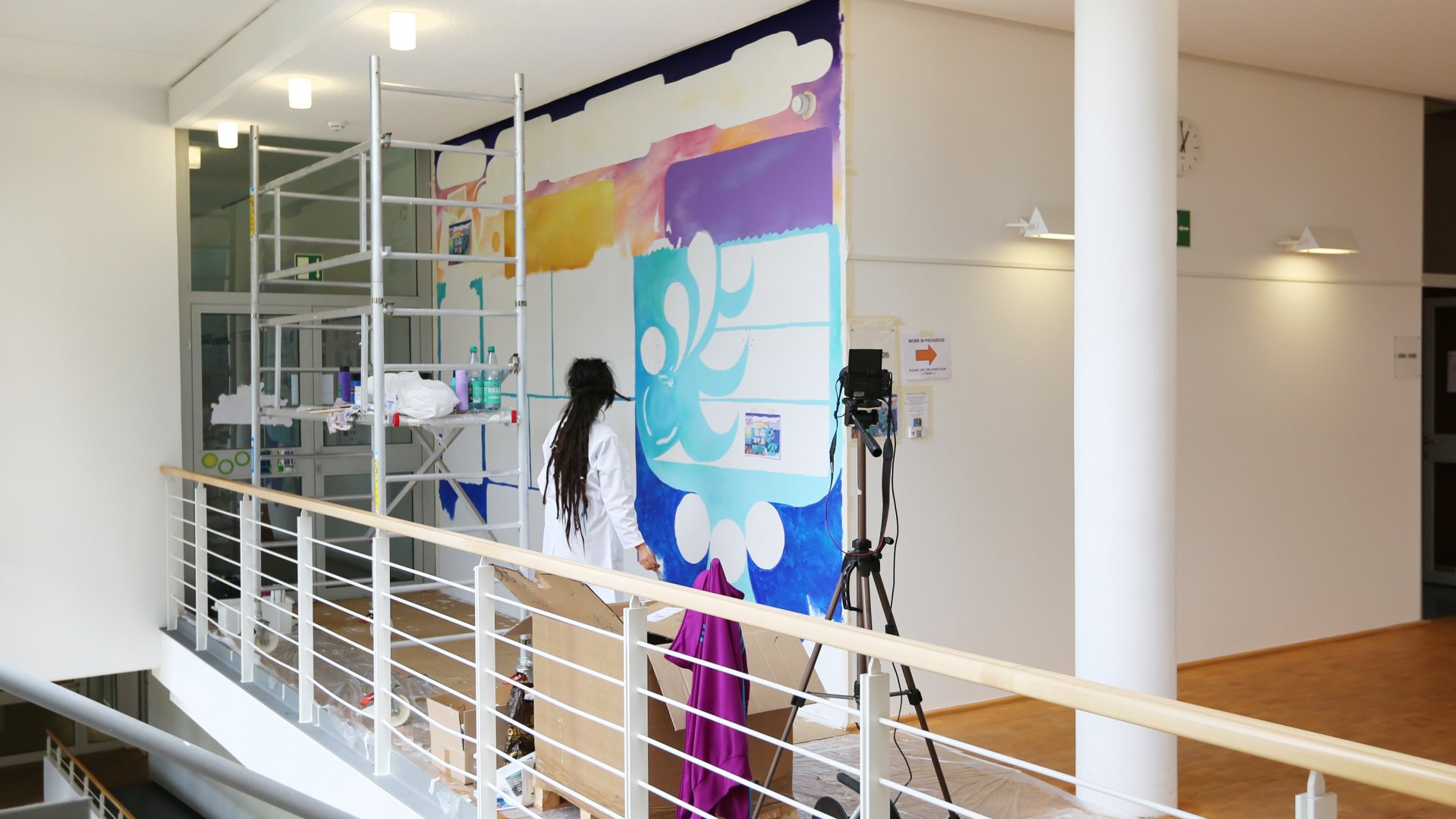
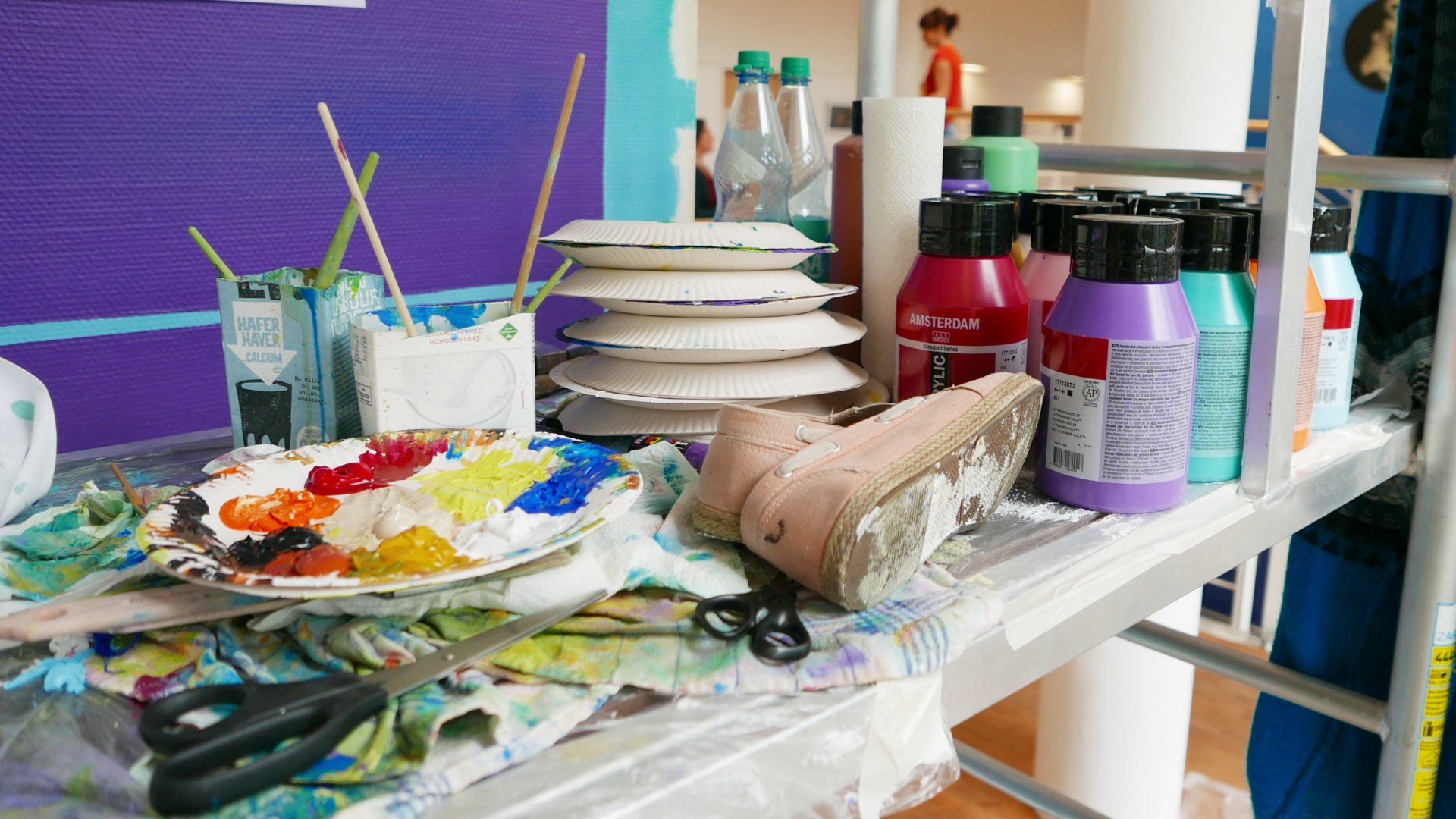
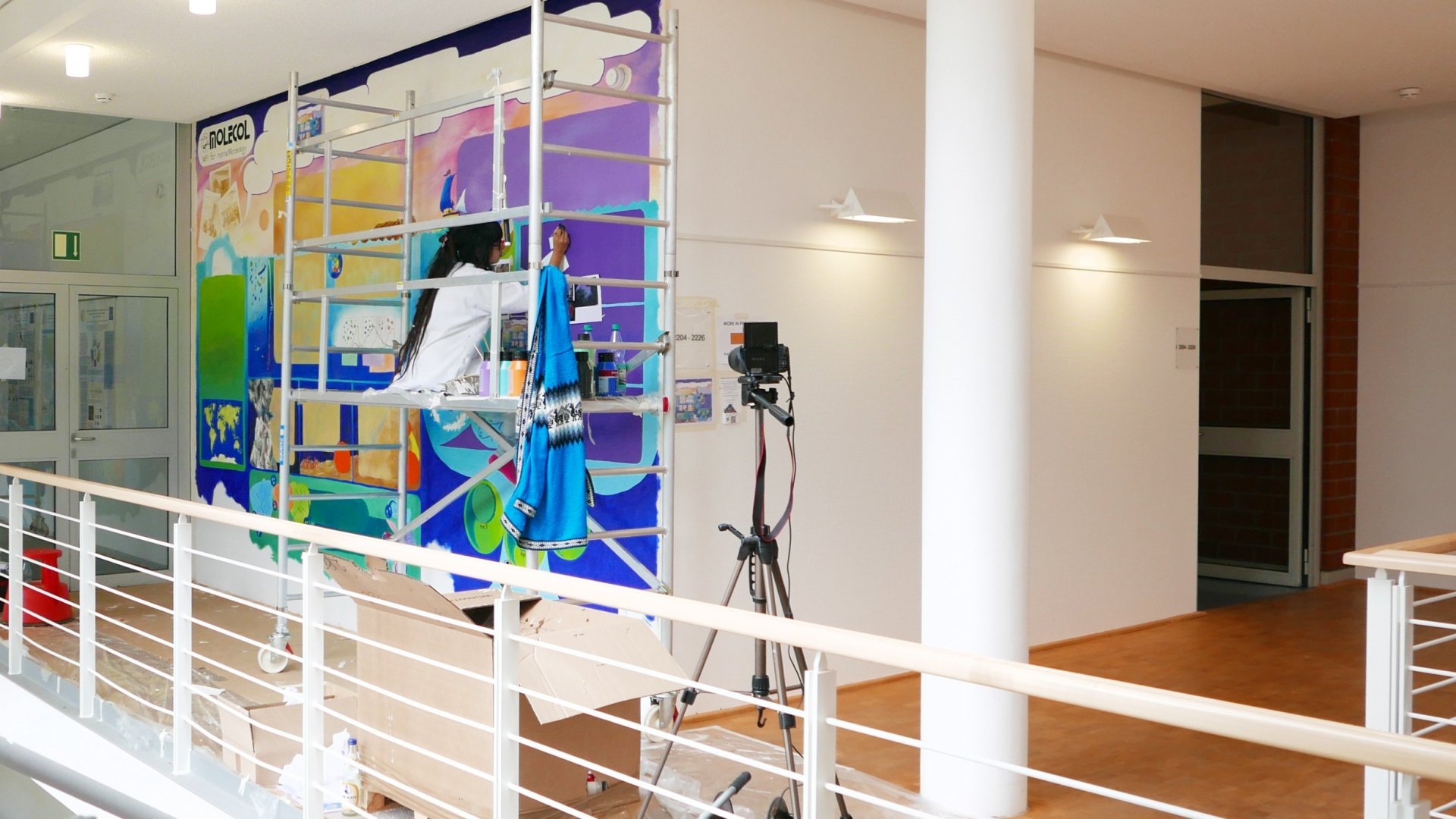
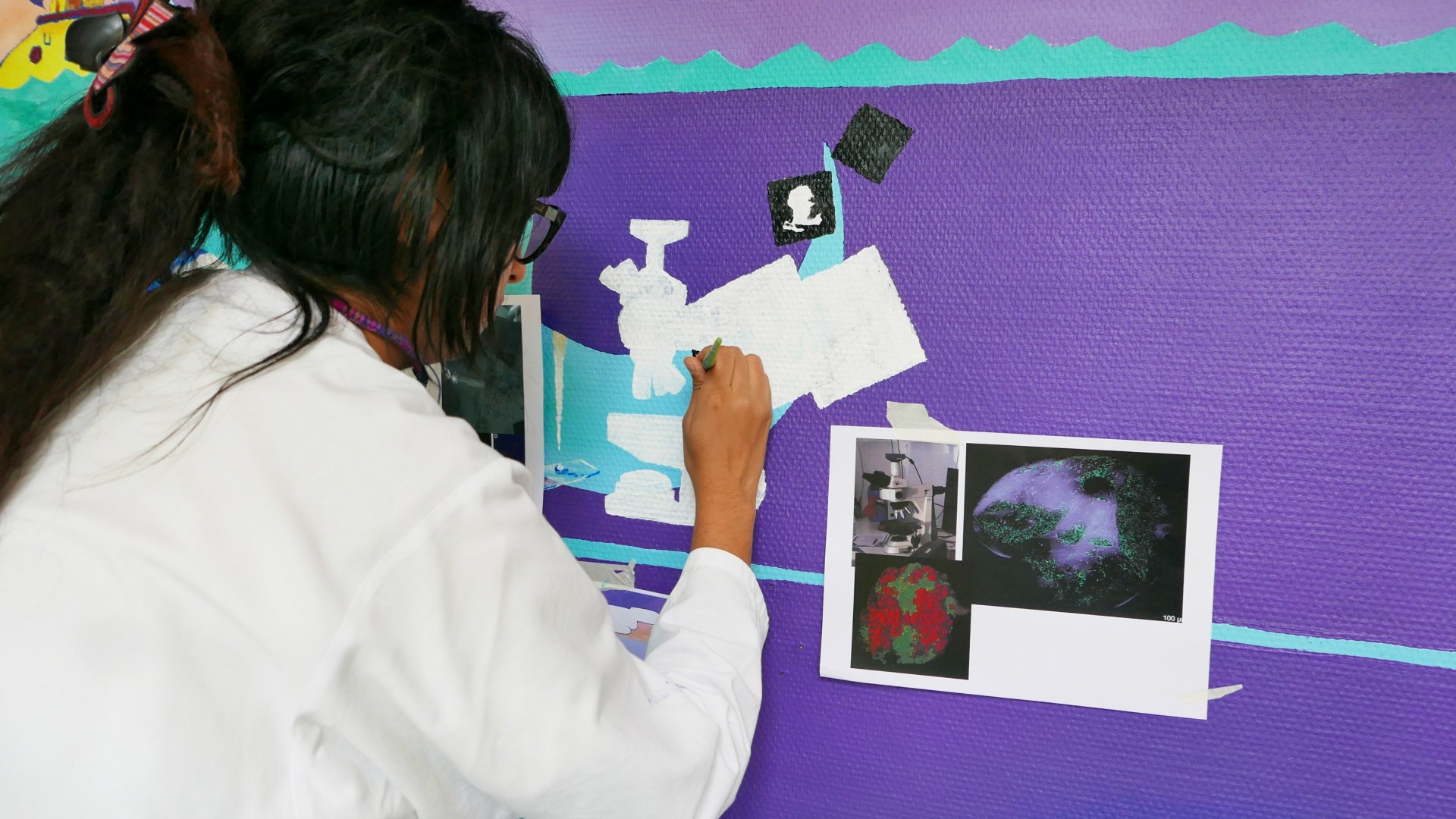
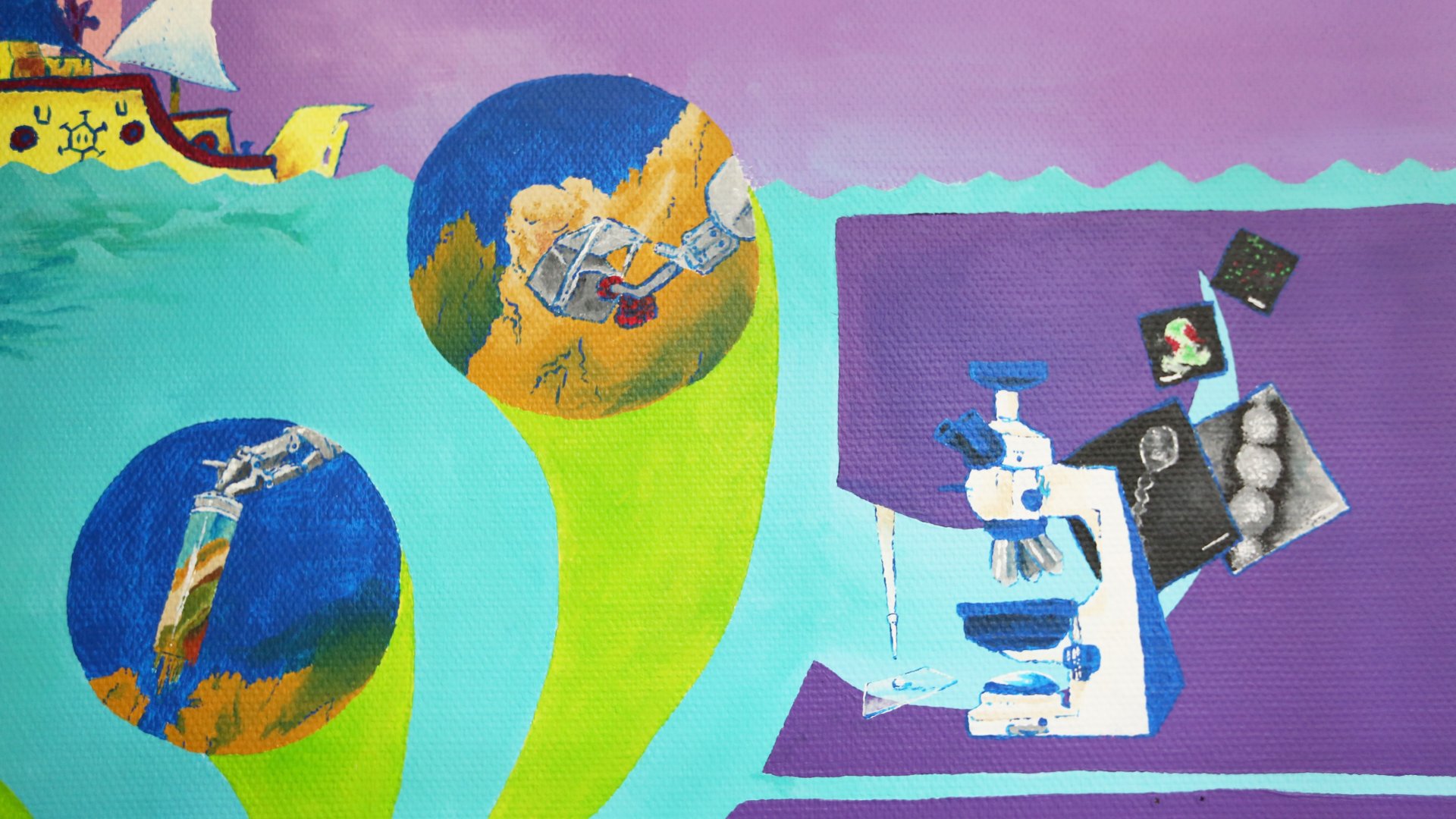
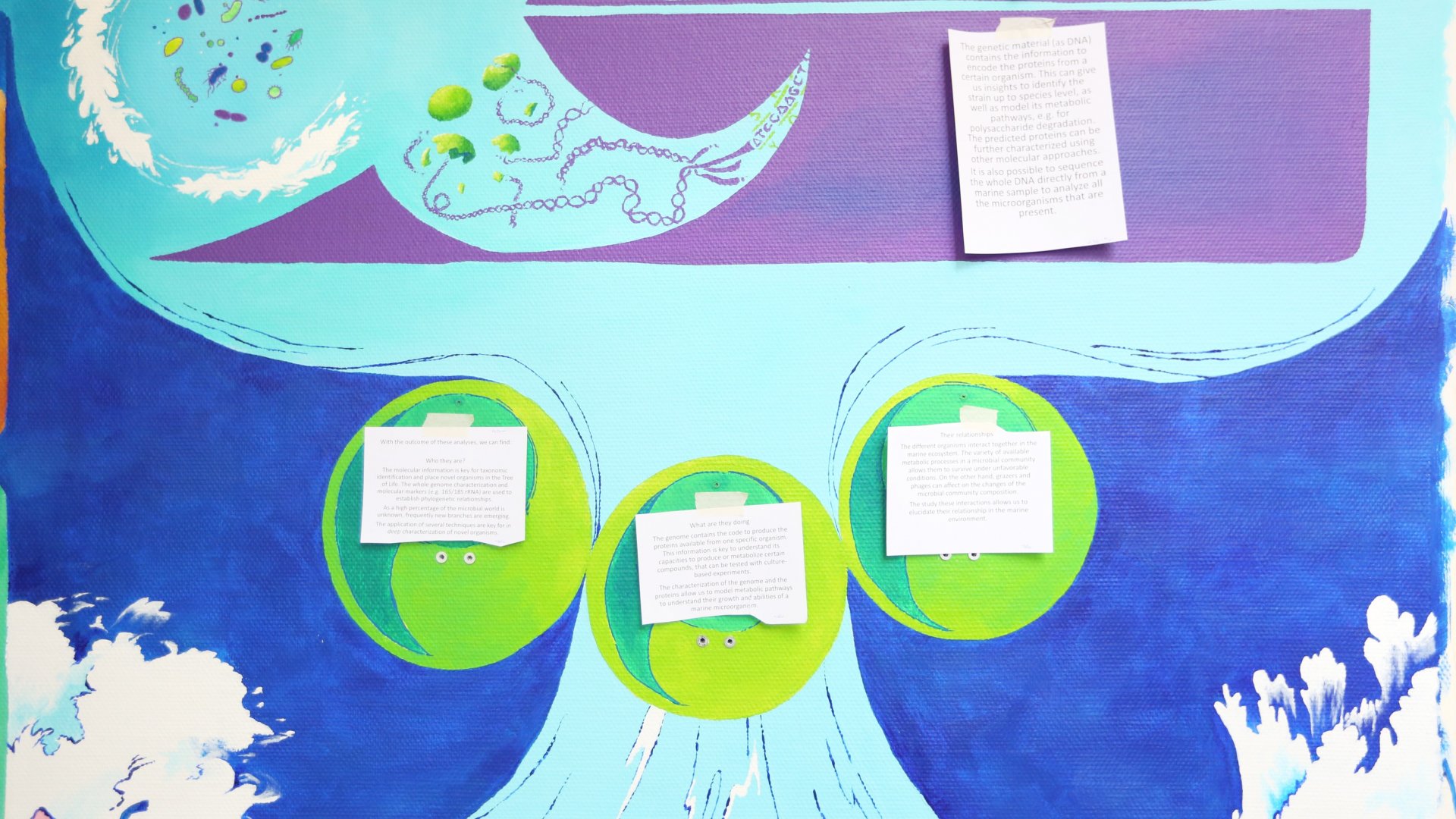
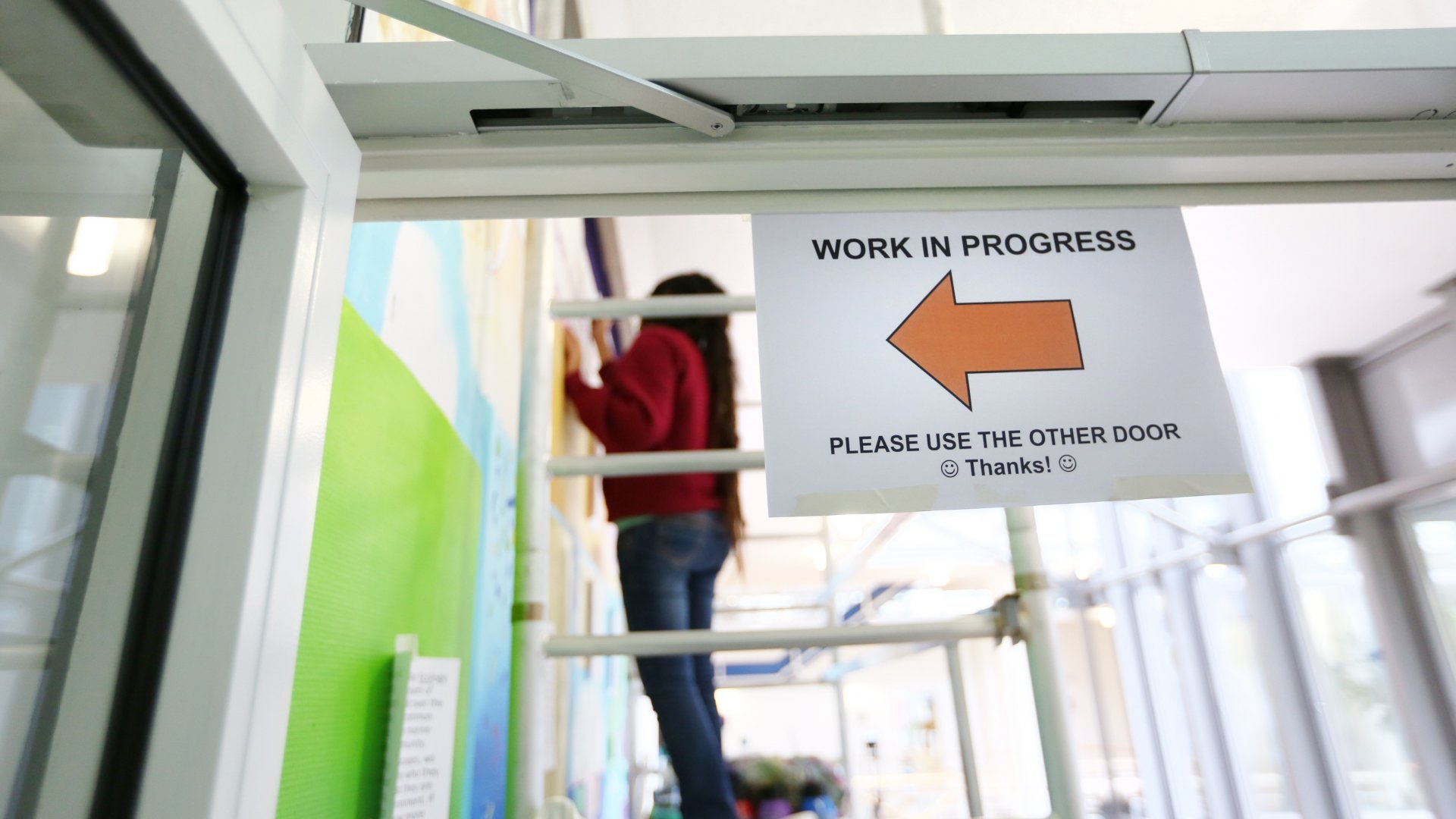

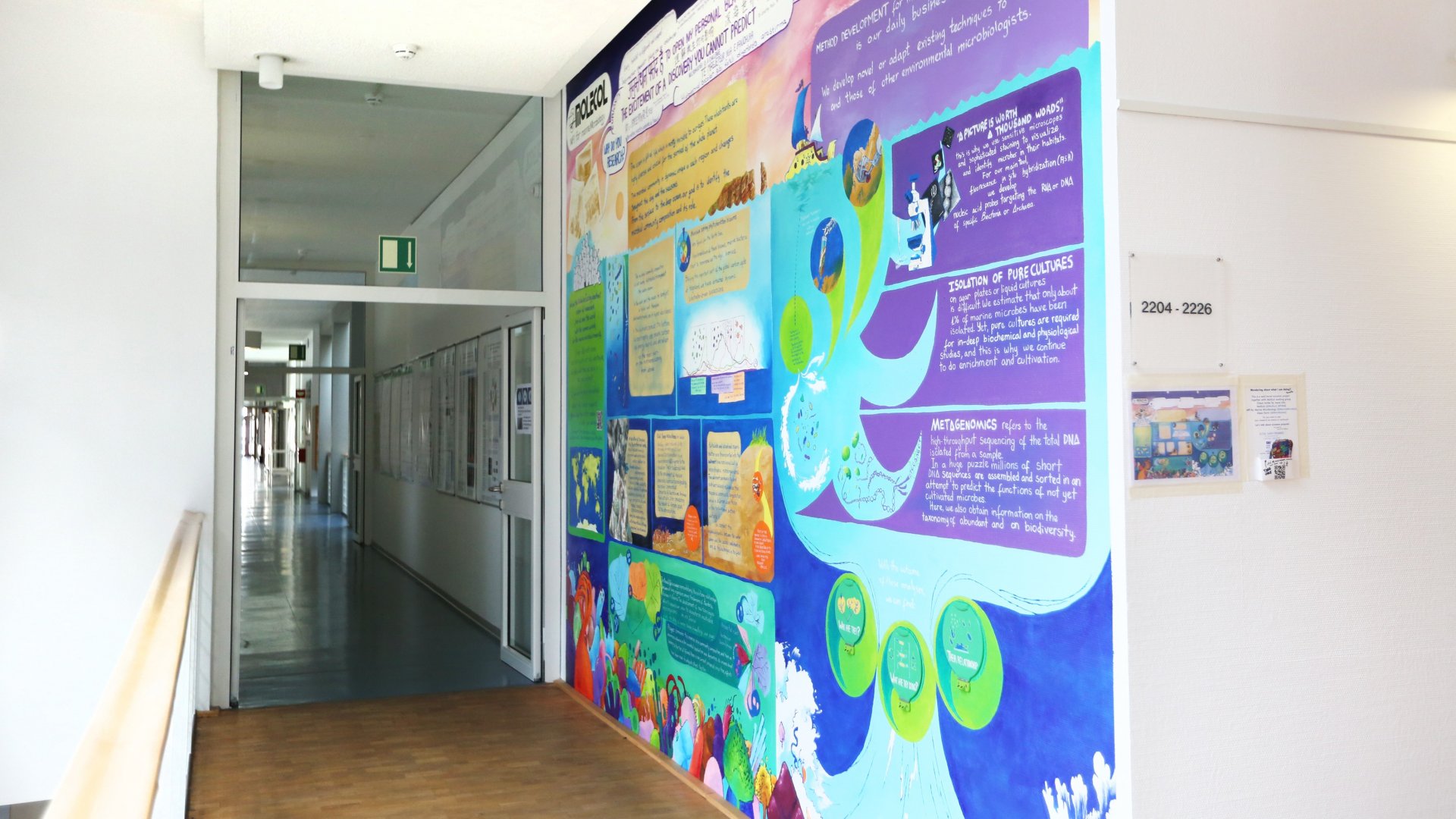
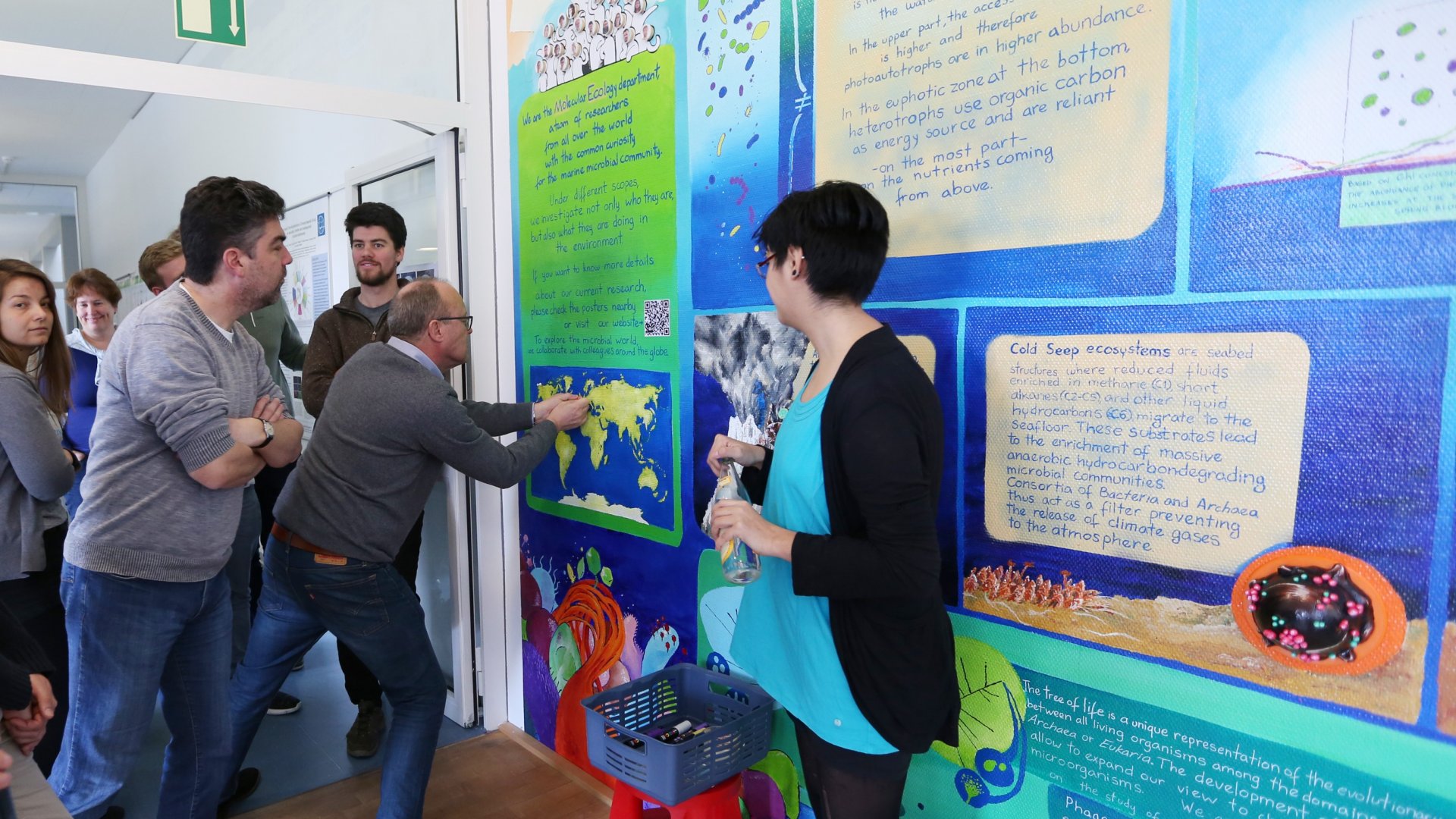

Video: Six months of work in a timelapse
Please direct your queries to:
